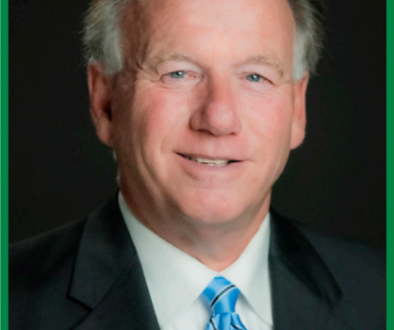The Great North American Eclipse Over Arkansas

By Deborah Horn
 Ready or not, the eclipse is coming. One thing is for certain, the April 8 solar eclipse’s path of totality cuts a wide diagonal swath across the state, starting in the Southwest corner and exiting the state near the Northeast. It will be big and possibly create bigger traffic problems—described by one ARDOT official like predicting a snowstorm.
Ready or not, the eclipse is coming. One thing is for certain, the April 8 solar eclipse’s path of totality cuts a wide diagonal swath across the state, starting in the Southwest corner and exiting the state near the Northeast. It will be big and possibly create bigger traffic problems—described by one ARDOT official like predicting a snowstorm.
According to NASA, the Monday solar event will offer about two-thirds of all Arkansans a unique view of the upcoming celestial event. It also promises more than a partial or quick show; the duration of totality will be up to 4 minutes and 27 seconds in some areas, almost double that of the August 21, 2017 eclipse.
Sevier County, including DeQueen, in the Southeast corner of the state is reported to be the best place to view the 2024 total solar eclipse. There, the maximum lunar coverage of the sun happens at 1:48 p.m., while in Russellville, more centrally located, it happens at 1:52 p.m. In these two locales, the total blackout will last more than four minutes, while in Mountain Home it will last about three minutes and in Little Rock about two minutes and 30 seconds.
The expected solar sightseers are also believed to grow the state’s 3 million residents’ population by half or more overnight. Day travelers are expected from the surrounding states to the East, but there are reports of visitors traveling from around the U.S. and the world, already booking lodging accommodations. Many agencies report there are few or no hotel rooms left to book in communities, and farmers have taken to renting out their fields to pitch tents or park an RV.
Large and small towns, universities, and public and private enterprises are betting big on the April solar event and going all out on their eclipse-related plans. However, like with any impending snowstorm, the eclipse’s impact on the state is hard to predict, especially when it comes to traffic congestion on major and minor roadways, said one ARDOT Assistant Chief Engineer. It could also impact gas availability and dining options.
Further complicating turnout, there may be clouds, rain, or yes, even snow — it’s not unheard of in April with the last in 2021, according to the Weather Service. Like in other emergencies, the Arkansas Department of Transportation isn’t waiting and has taken the lead on planning for the possible impact of the Great North American Eclipse over Arkansas.
ASU Joins NASA
Early morning on Friday, April 5, Prof. Ross Carroll will leave the Jonesboro campus of Arkansas State University (ASU), making his way to the Winthrop Rockefeller Institute at the top of Petit Jean Mountain near Russellville. The goal is to be directly in the path of the April 8 solar eclipse’s path of totality, which will pass directly over the small Arkansas town of 30,000 at about 1:52 p.m.
The Associate Physics Professor with ASU’s Department of Chemistry and Physics and Mitchell Clay, a Project Program Specialist with ASU’s Department of Computer Science, and eight students are part of NASA’s Nationwide Eclipse Ballooning Project. ASU’s two teams will join about 50 other teams from across the nation working toward the same end, Carroll explained as he walked across campus in early December.
A total solar eclipse is the moon passing in front of the sun, and they will launch several balloons that are around the same size as the National Weather Service’s weather balloons, about six feet wide by 10 feet long, with 50-foot string-like appendages. These, however, are capable of lifting up to 12 pounds of equipment to altitudes over 100,000 feet to the stratosphere—that’s near to the edge of outer space. “It’s not quite to outer space,” Carroll said.
They also launched balloons during the Aug. 21, 2017 partial eclipse that passed over the state, and Carroll described it as a test run for the big 2024 eclipse. “We’ll be one of the dozens of teams looking to take atmospheric measurements and live-streaming video of the moon’s shadow racing across on NASA TV,” Carroll said. He described the project as a bit “on the nerdy side, but it will be an intense, amazing experience.” According to NASA, this offers students “real-world STEM experience and contribute valuable scientific and engineering data through their projects.”
Jacob Rodgers, a senior computer science major, said, “It’s an honor to play a small part in something this large, and I’m grateful for the education and experience that will come along with that.”
The ASU team will be joined by an expected 1.5 million visitors on the state’s roadways, all jostling for a best position to view the 2024 eclipse as the sun races from southwest to northeast Arkansas. That means the state’s population could increase by a third or even double in the days before the Monday mid-afternoon event.
Already, Russellville overnight accommodations have reportedly been booked for months, and none are now available. Fortunately for Carroll, his team is guaranteed rooms at the Rockefeller Institute. However, like the other expected million or so out-of-state travelers, they’ll need food and gas, too.
The 2024 Solar Eclipse
It’s been deemed the Great North American Eclipse, and the total solar event promises to be a once-in-a-lifetime event for many Arkansans. It’s also believed to draw sun gazers from nearby states like Mississippi, Louisiana, and Tennessee, who can probably make it a one-day trip, but there are reports of people coming from across the United States and around the world to Arkansas, said Karen Trevino, North Little Rock Parks & Tourism President and CEO.
The Arkansas Department of Parks, Heritage, and Tourism believes the major attraction could pull in as many as 1.5 to 2 million visitors to Arkansas alone. As in Russellville, North Little Rock is reporting that its hotels and other accommodations are full or nearly so, and the North Little Rock’s Downtown Riverside RV Park’s 75-plus spaces have been booked for months, Trevino said.
While the total darkness over Russellville is predicted to last four minutes and 12 seconds, in Central Arkansas it’s about half that time or two minutes. That was enough for cities like Conway, Hot Springs, and North Little Rock to turn the weekend before and that Monday into one big solar-centered festival, Trevino said. “We wanted to give people something to do while they’re here.”
The city’s downtown area, referred to as Argenta, will host events on the Arkansas River, and on Monday, Dickey-Stephens Baseball Park will open to the public for viewing.
There are watch events planned at Argenta’s new Plaza on Main Street and at Rockwater Marina on the Arkansas River, live entertainment, bicycle and kayak rentals for unique viewing opportunities from or along the river, and much more. Plans also include interactive and educational hubs for those who want to learn more about the events.
While many smaller towns like Lonoke and Beebe just started talking about the eclipse and tourist possibilities and problems, Trevino said, “We’ve been planning for four years.”
Record Traffic Levels Expected
“With the big possibilities come bigger problems,” said Steve Frisbee, P.E., ARDOT Maintenance Assistant Chief Engineer. Based on this and the state’s projected numbers, he said, “Basically, we could have an extra 700,000 vehicles on the road.”
ARDOT has been studying and discussing the impact the influx of additional vehicles could have on the state’s roadways, and Frisbee recently published and shared a document outlining practical solutions and suggestions.
“It’s like we’re planning for the Super Bowl but for all over the state,” Frisbee said during a recent phone conversation. Currently, ARDOT has upgrades, renovations, and new road construction across the state, and he said they’re planning to possibly shut down worksites like the major construction work on Interstate 30. It isn’t just Central Arkansas’s roadways and worksites that concern ARDOT, but smaller four- and two-lane rural highways.
“We’re worried about possible bottlenecks,” and this is part of the message they’re attempting to pass along to smaller communities. They’re relying on Traffic Demand Models that evaluate current traffic data with the influx of vehicles expected on the eclipse day.
They plan on putting maintenance personnel on the road to help with vehicle breakdowns such as running out of gas or flat tires. Frisbee said, “It will be a real challenge. We have to stay sharp.
The Great Escape
While people may trickle into the state in the days before the eclipse, Frisbee describes the mass exit as a big shovelful of sand trying to move through a small funnel. His team has come up with ways to reduce the stress on the state’s roadways, which includes school districts dismissing classes that day and suggesting employers encourage employees to work from home. That’s the current plan for non-essential employees at ARDOT, Frisbee said.
They’re also asking distribution and other businesses that rely on big delivery trucks to consider declaring that Monday a Truck-Free Day and encouraging residents to stay home.
Much like anticipating a winter storm, Frisbee can’t know for certain where and how much the snow will fall, so he suggested residents to “Be prepared, and be patient.” He said to stock up on necessities before the start of the April 5 weekend if staying home, but if traveling even a short distance, he said to keep water and snacks on-hand and an eye on the gas gauge. He added, “Travelers may experience long delays.”

“We’re really working hard to get the word out,” including warning hospitals of additional patient demands, he said. ARDOT has been working with cities like North Little Rock in order to help personnel to avoid potential in-town traffic problems. But their mission extends way beyond this, and they are also working with other state agencies such as the State Park Department, Arkansas National Guard, State Police, Highway Police, the Arkansas Department of Emergency, Homeland Security, and coordinating with surrounding states and local city and county law enforcement agencies.
“It’s a huge effort,” Frisbee said. He hopes ARDOT’s extensive research and documentation will prevent or lessen the expected problems. Perhaps it’s starting to have an impact, because on Tuesday, December 12, Lonoke held a meeting to discuss the eclipse. ARDOT started their information campaign right after Christmas, and it will continue through April. Frisbee said, “I hope this is something the entire state from the highest levels on down will take seriously and embrace.”


